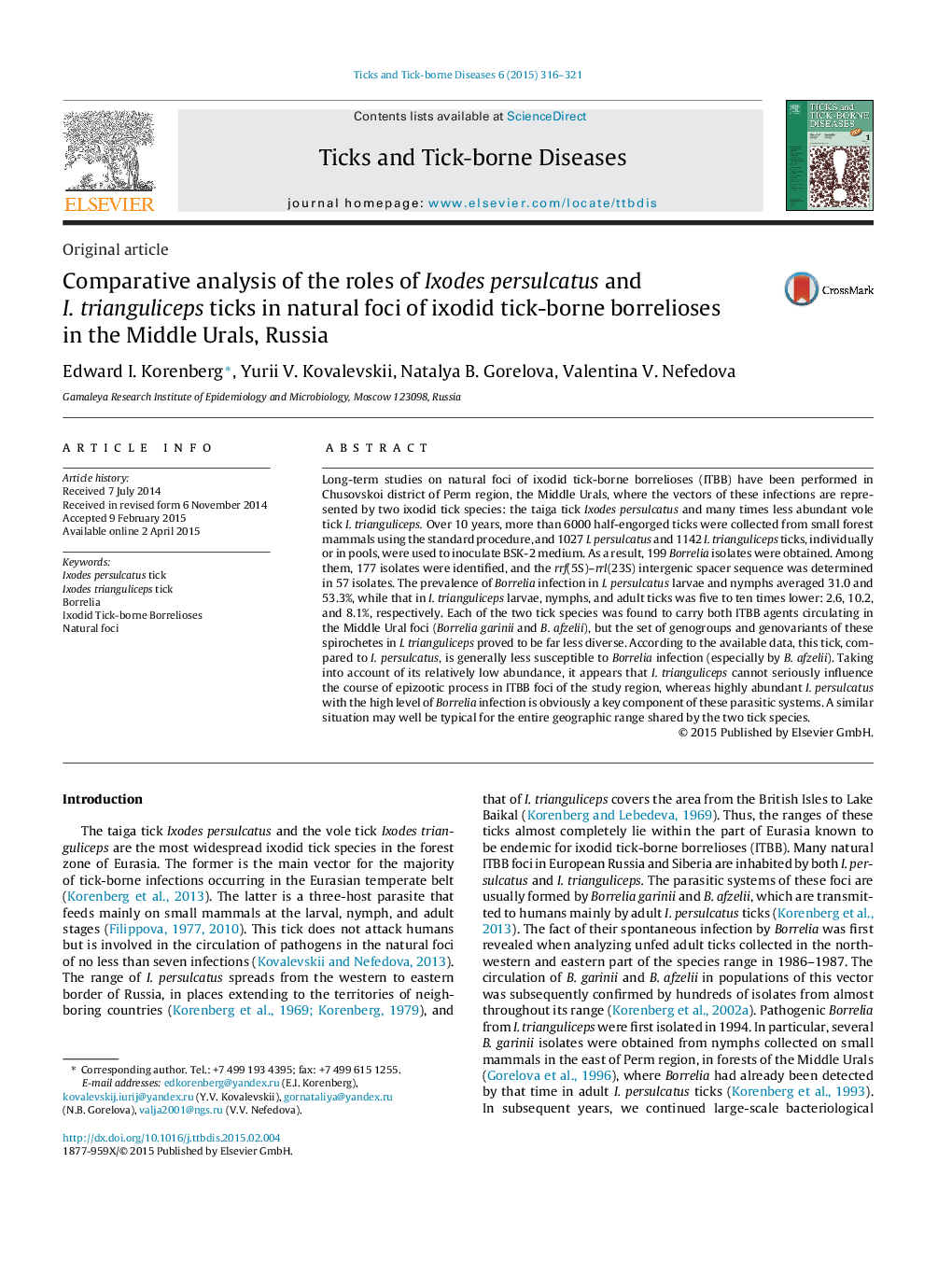| Article ID | Journal | Published Year | Pages | File Type |
|---|---|---|---|---|
| 2473929 | Ticks and Tick-borne Diseases | 2015 | 6 Pages |
Long-term studies on natural foci of ixodid tick-borne borrelioses (ITBB) have been performed in Chusovskoi district of Perm region, the Middle Urals, where the vectors of these infections are represented by two ixodid tick species: the taiga tick Ixodes persulcatus and many times less abundant vole tick I. trianguliceps. Over 10 years, more than 6000 half-engorged ticks were collected from small forest mammals using the standard procedure, and 1027 I. persulcatus and 1142 I. trianguliceps ticks, individually or in pools, were used to inoculate BSK-2 medium. As a result, 199 Borrelia isolates were obtained. Among them, 177 isolates were identified, and the rrf(5S)–rrl(23S) intergenic spacer sequence was determined in 57 isolates. The prevalence of Borrelia infection in I. persulcatus larvae and nymphs averaged 31.0 and 53.3%, while that in I. trianguliceps larvae, nymphs, and adult ticks was five to ten times lower: 2.6, 10.2, and 8.1%, respectively. Each of the two tick species was found to carry both ITBB agents circulating in the Middle Ural foci (Borrelia garinii and B. afzelii), but the set of genogroups and genovariants of these spirochetes in I. trianguliceps proved to be far less diverse. According to the available data, this tick, compared to I. persulcatus, is generally less susceptible to Borrelia infection (especially by B. afzelii). Taking into account of its relatively low abundance, it appears that I. trianguliceps cannot seriously influence the course of epizootic process in ITBB foci of the study region, whereas highly abundant I. persulcatus with the high level of Borrelia infection is obviously a key component of these parasitic systems. A similar situation may well be typical for the entire geographic range shared by the two tick species.
